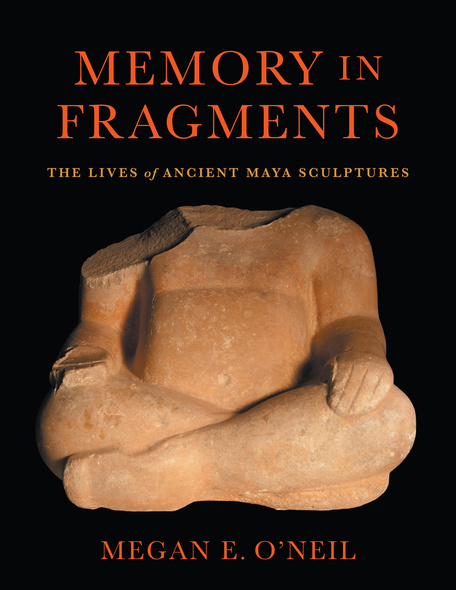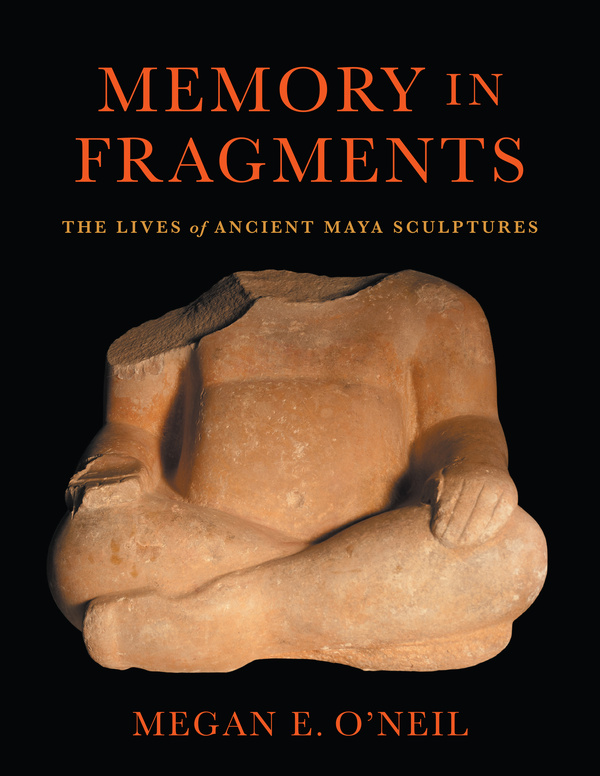
Memory in Fragments
The Lives of Ancient Maya Sculptures
An exploration of how the ancient Maya engaged with their history by using, altering, and burying stone sculptures.
For the ancient Maya, monumental stone sculptures were infused with agency. As they were used, reused, altered, and buried, such sculptures retained ceremonial meaning. In Memory in Fragments, Megan E. O'Neil explores how ancient Maya people engaged with history through these sculptures, as well as how they interacted with the stones themselves over the course of the sculptures’ long “lives.” Considering Maya religious practices, historiography, and conceptions of materials and things, O’Neil explores how Maya viewers perceived sculptures that were fragmented, scarred, burned, damaged by enemies, or set in unusual locations. In each case, she demonstrates how different human interactions, amid dynamic religious, political, and historical contexts, led to new episodes in the sculptures' lives.
A rare example of cross-temporal and geographical work in this field, Memory in Fragments both compares sculptures within ancient Maya culture across Honduras, Guatemala, Mexico, and Belize over hundreds of years and reveals how memory may accrue around and be evoked in material remains.
This magisterial monograph will stand as the benchmark on Maya carved stone monuments as artifacts, joining Tatiana Proskouriakoff’s stylistic seriation of Maya monuments, A Study of Classic Maya Sculpture, published in 1950, as an essential and foundational text in advancing the discipline. Clearly written and finely illustrated, Professor O’Neil’s narrative contextualizes stone sculptures as, from the vantage of their ancient and contemporary makers and users, living participants in shaping the past, present, and future, no matter their condition.
Megan E. O’Neil’s book is a timely and significant intervention in Maya art historical studies. Previous scholarship has often focused on iconography and the extraction of meaning from texts rather than the lives of the objects upon which such images and inscriptions are found. In contrast, O’Neil examines what sculptures do and the landscape of memory that they affect, demonstrating the complex ways in which monuments were reused and why this is critical for understanding their role in Maya culture.
Megan E. O'Neil is an assistant professor of art history at Emory University; the author of Engaging Ancient Maya Sculpture at Piedras Negras, Guatemala and The Maya; and the coauthor of a revised edition of Maya Art and Architecture.
- List of Illustrations
- A Note on Language, Spelling, and Calendar Conventions
- Preface and Acknowledgments
- Section I. Shaping the Present and the Past
- Chapter 1. Fragments of and in the Past
- Chapter 2. Multidisciplinary Methodologies and Theoretical Approaches
- Chapter 3. About Time: Engaging Time, History, and Materiality
- Section II. Breakage and Reuse
- Chapter 4. Violence, Transformation, and Renewal: Material Changes to Ancient Maya Sculptures
- Chapter 5. Memory and Materiality of Reused, Reset, and Repurposed Monuments
- Section III. Burial
- Chapter 6. Ancient Maya Sculptures, Seen and Unseen: Part I, Burial and Renewal
- Chapter 7. Ancient Maya Sculptures, Seen and Unseen: Part II, Sculptures Buried in Architecture
- Conclusion. Lives of Things
- Notes
- Works Cited
- Index







